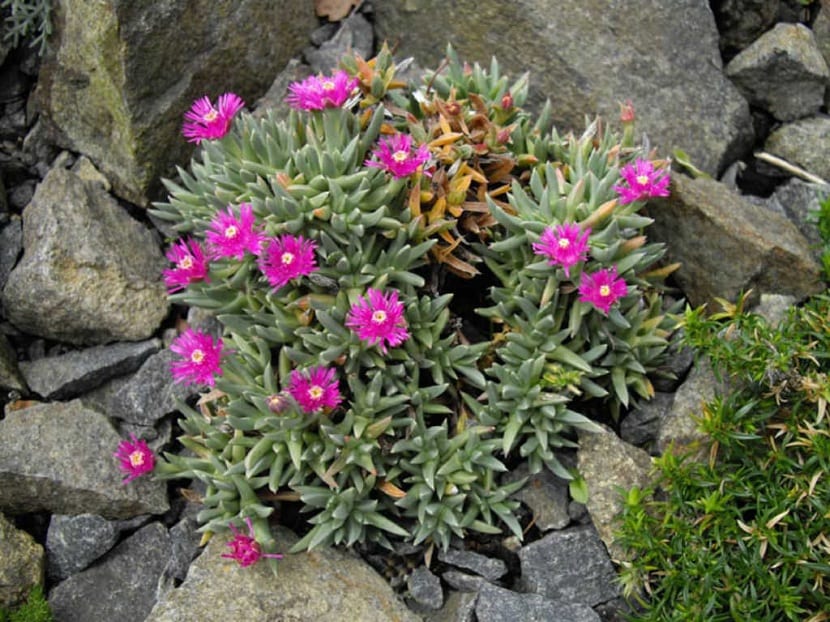
Today we come to talk about a quite exotic plant that belongs to the succulents. Is about the mat. Its scientific name is Ruschia spp. And it is a perfect plant to decorate our garden. They are plants that can vary a lot between large bushes and reach up to a meter and a half in height until they are a dwarf plant that grazes the surface of the ground. Thanks to this difference in sizes, this plant becomes one of the most exotic of the succulents.
Do you want to know more about the mat? Here we will tell you everything about its characteristics, requirements and necessary care to always keep it healthy. So, if you want to know more, just keep reading seguir
Key features
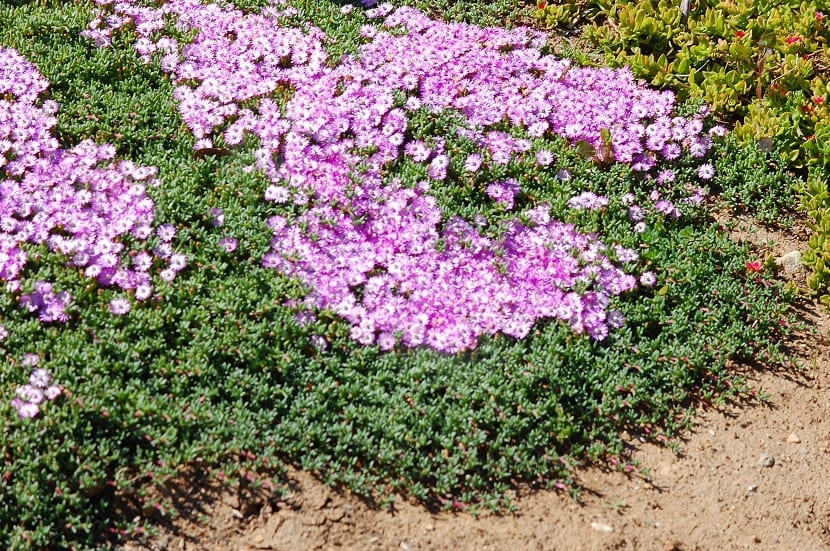
The branches of the mat are woody and quite resistant to wind or blows. They have short internodes that are often covered by dry leaves. In some species of this type we can find some thorns that they use to protect themselves from the animals that graze on them. So they can stay healthy the rest of the year.
The color can vary from white to pink, going through some shades of purple. The flowers are large and cover the entire plant. The best thing about this plant for the garden is that it blooms throughout the year. It is true that, although they are in summer and winter, reach their maximum splendor in the spring and autumn stage. This is due to the fact that the temperatures in these times are still somewhat higher and more pleasant, but not as much as in summer that everything begins to dry out due to the scarce rainfall.
The flowers of this plant open only during the day and have a rather sweet aroma. The leaves can often be seen with a bluish-green color and sometimes with teeth along the edges. A characteristic that differentiates the genus from other succulents is that the leaves are almost always with darker spots.
As for its fruit, we find capsules that have 5 or 6 chambers and a deep base without valve wings. The seeds are yellowish-brownish in color. The good news is that all plants in this genus grow fairly quickly, but for a short duration. After four years they become more robust and, above all, if they are found in more arid and semi-arid areas.
Range and habitat
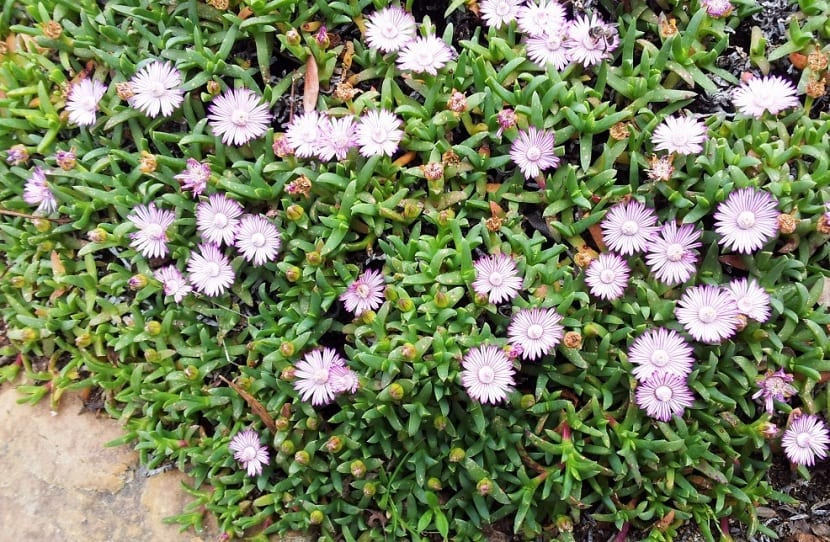
The mat has great variability in terms of the ecosystems in which we can find it. This is because it has great adaptation to the different types of soil in which it can survive. The types of soil in which it is usually found vary from sandstones, calcareous soils, some more clayey soils, and other composites of decomposed shale and deep sandy loams.
We can mainly find it in the best known biomes in South Africa. If distribution extends from Windhoek in Namibia to the Western Cape, Eastern Cape, Free State and Gauteng. The region where we can find it most frequently in its natural state is in the driest region of the southwest at an altitude close to sea level. The dry zone does not usually exceed 100 mm of annual rainfall.
Other species of the genus can be found in some places where the rains are higher, reaching levels of up to 800 mm per year. The mat is quite tolerant to frost, fire and extreme droughts. Therefore, it becomes an ally plant for our garden. It gives us a great exotic contribution and has a great adaptability both to extreme climates and to the type of soil.
Mat requirements
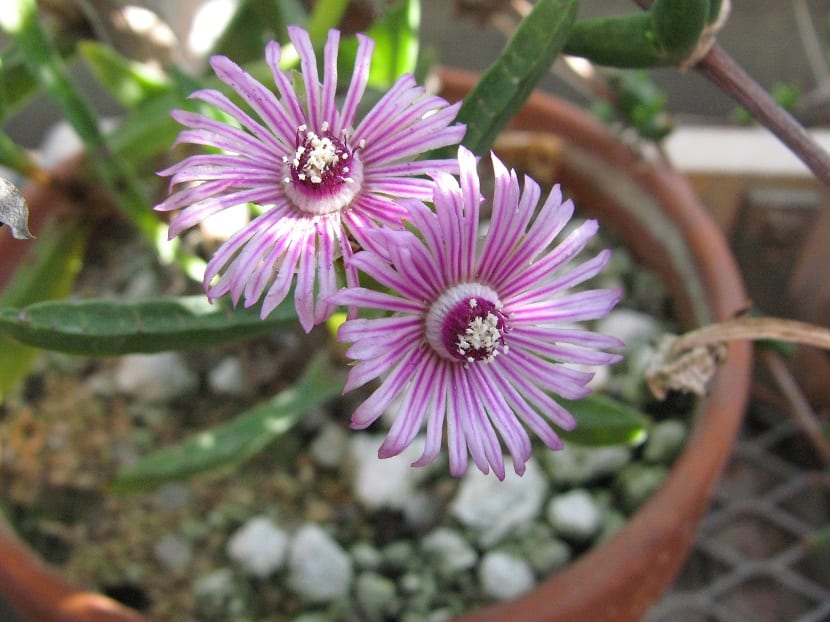
Although this plant is quite resistant to extreme climates and different types of soil, you have to think about taking care of it to keep it completely healthy throughout the year. Many people use the mat as cover plant in the driest areas of the garden. Rather than leaving the garden uncovered by sand, it is better to cover it with an exotic plant.
It can be perfectly combined with other plants such as Sedum, Gazania, Cerastium, Drosanthemum, Lampranthus, Crassula arborescens, Cotyledon orbiculata. It can be used both in planters and in pots. They are ideal to place in gardens by the sea (we have already seen before that the area where it is most found is the one close to sea level). In addition, they are good plants that tolerate high levels of contamination.
Now we move on to see what requirements you need. The first thing is to have a good exposure to the sun and high temperatures. It is able to withstand some isolated frost of up to about -5 degrees. If the area where you live has a climate that is used to having constant frosts, I am afraid it will not be able to survive.
The type of soil is better that is well drained, since it does not tolerate levels of stored water. It is a plant that does not need humidity, since it lives in extremely dry places. Therefore, we can have a poor soil, limestone, sandy or stony. As I have mentioned, you do not need frequent watering at all. We will wait for the earth to dry completely and we will avoid waterlogging at all times. They withstand drought well, so don't worry if you forget to water them.
Necessary care
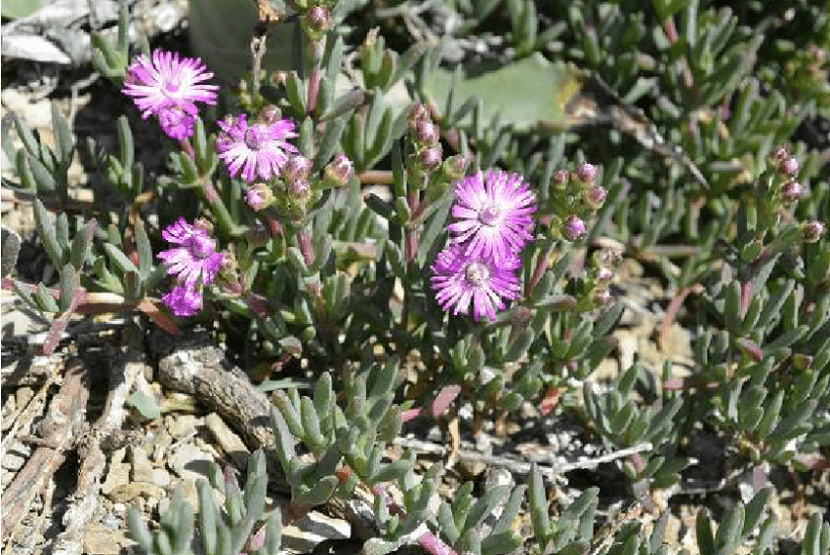
In winter they do not need irrigation, since with the rainwater they have enough. They also do not need special fertilizers, although a mineral fertilizer for cacti and succulents can come in handy in the spring time to give their flower growth a boost.
In general, these plants are not attacked by pests or diseases, although sometimes they can be victims of fungi if we overdo it with watering. Thus, it is better not to water them in winter or when there is regular rainfall.
We can easily multiply them using the cuttings technique. They only take a week to root. The best time to cut is after flowering or earlier.
We can also multiply them by seeds, although it is a slower process.
I hope that with this information you can take care of and enjoy your mat in the garden.